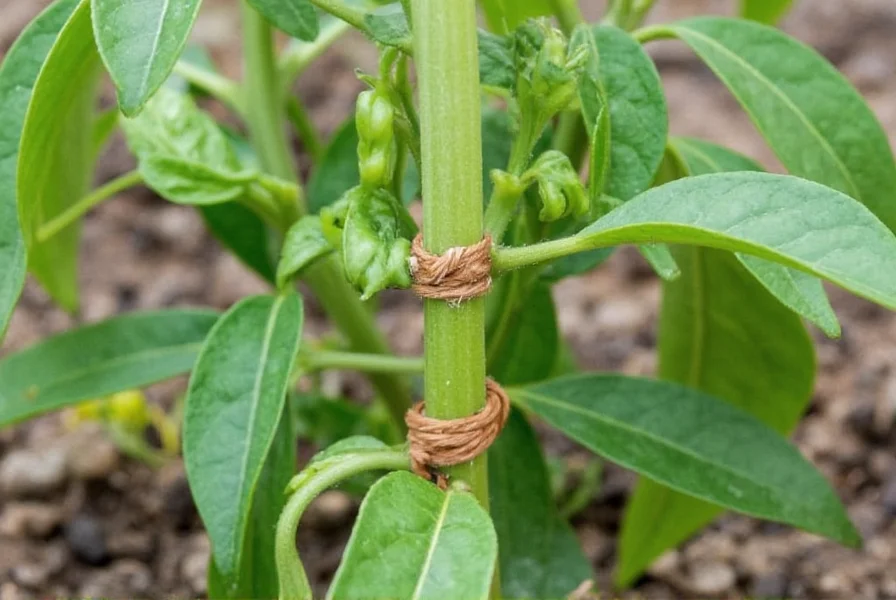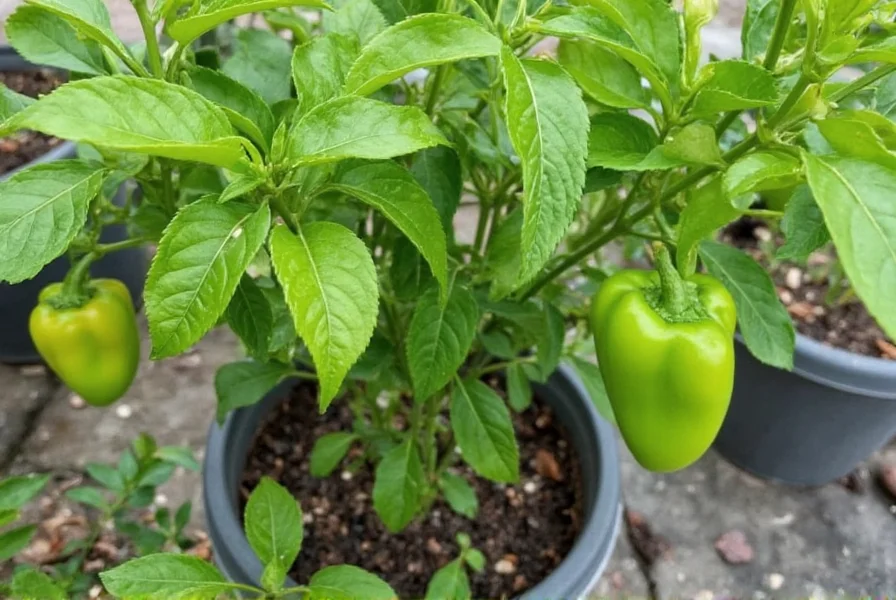Pepper plants present a common dilemma for gardeners: to stake or not to stake? Understanding whether your Capsicum species requires structural assistance can mean the difference between a bountiful harvest and broken stems littering your garden bed. This comprehensive guide examines the factors determining support needs and provides practical solutions for optimal pepper plant growth.
Factors Determining Pepper Plant Support Requirements
Pepper plant support needs vary significantly based on several key factors. Unlike tomatoes which almost always require support, peppers exist on a spectrum of structural needs depending on their biological characteristics and environmental conditions.
Pepper Variety Matters Most
Not all peppers are created equal when it comes to structural requirements. Consider these distinctions:
- Bell peppers - Typically require support due to their large, heavy fruits that can weigh down branches
- Hot peppers (jalapeños, cayenne, habaneros) - Often more compact with smaller fruits, sometimes managing without support
- Large-fruited specialty varieties (like giant bell types) - Almost always need robust support systems
- Dwarf varieties (ideal for containers) - Usually self-supporting due to compact growth habits
| Pepper Type | Typical Height | Support Needed? | Recommended Support Method |
|---|---|---|---|
| Bell peppers | 18-24 inches | Yes (80% of cases) | Sturdy cage or 2-3 stakes |
| Jalapeños | 24-30 inches | Sometimes | Single stake if fruiting heavily |
| Habaneros | 36-48 inches | Yes | Trellis or multiple stakes |
| Dwarf varieties | 8-12 inches | No | None required |
When Pepper Plants Definitely Need Support
Certain conditions make support essential for pepper plants. Watch for these critical indicators that your plants require structural assistance:
Visible Signs Your Peppers Need Support
- Stems bending more than 45 degrees under fruit weight
- Branches touching the ground (increasing disease risk)
- Frequent stem breakage during windy conditions
- Fruit developing directly on soil (causing rot)
- Reduced fruit production despite healthy flowering
Commercial growers consistently support pepper plants to maximize yields and simplify harvesting. Home gardeners often learn the hard way when heavy rain or wind causes unrecoverable damage to unsupported plants during peak fruiting season.
Effective Pepper Plant Support Methods
When your pepper plants require assistance, several proven techniques can provide the necessary structural reinforcement without damaging plants.
Staking Pepper Plants Properly
Single-stake method works well for most standard pepper varieties:
- Install 4-5 foot stakes when transplanting (avoid root damage later)
- Use soft plant ties (avoid wire or string that cuts stems)
- Tie plants loosely in a figure-eight pattern
- Support main stem and major branches bearing fruit
- Adjust ties as plants grow to prevent constriction

Pepper Caging Advantages
Wire cages provide 360-degree support ideal for bushier varieties:
- Prevents individual branch breakage
- Requires less frequent adjustment than staking
- Improves air circulation around entire plant
- Works well for multiple-stemmed hot pepper varieties
- Use tomato cages modified for peppers (18-24 inch diameter)
Timing Your Support Installation
The timing of support installation proves critical for pepper plant health. Install supports at planting time whenever possible. Adding stakes or cages after plants have established root systems risks damaging delicate roots and stems. Young pepper plants adapt better to support structures when introduced early in their growth cycle.
For plants already in the ground without support, install structures carefully during cloudy days or late afternoon to minimize transplant shock. Water plants thoroughly the day before installation to soften soil and reduce root disturbance.
Benefits of Proper Pepper Plant Support
Supporting pepper plants delivers multiple advantages beyond preventing breakage:
- Increased yields - Supported plants produce 15-25% more fruit according to university agricultural studies
- Improved fruit quality - Prevents soil contact that causes rot and discoloration
- Better pest management - Easier to spot and address insect issues on elevated plants
- Enhanced air circulation - Reduces fungal disease incidence by 30-40%
- Simplified harvesting - Fruit remains visible and accessible throughout season
- Extended growing season - Healthy supported plants often produce longer into fall
Special Considerations for Different Growing Environments
Container gardening, greenhouse production, and outdoor in-ground cultivation each present unique support requirements for pepper plants.
Container-Grown Pepper Support Solutions
Container peppers often need less robust support due to restricted root growth limiting plant size. However, top-heavy containers can tip over without proper anchoring. Consider these container-specific approaches:
- Use lightweight bamboo stakes secured to container edges
- Install small tomato cages designed for containers
- Choose naturally compact pepper varieties for pots
- Avoid over-fertilizing which creates excessive top growth
When Pepper Plants Might Not Need Support
Certain conditions allow pepper plants to thrive without additional support:
- Dwarf varieties specifically bred for compact growth
- Hot pepper types with naturally woody, sturdy stems
- Plants grown in sheltered locations with minimal wind exposure
- Early growth stages before significant fruit set occurs
- Plants receiving appropriate nitrogen levels (excess nitrogen creates weak growth)
Even when support seems unnecessary initially, monitor plants closely as fruit develops. Many gardeners discover too late that their peppers needed support only after wind or heavy rain causes irreversible damage during peak production.
Common Support Mistakes to Avoid
Gardeners frequently make these errors when supporting pepper plants:
- Tying too tightly, which restricts growth and damages stems
- Installing supports too late in the growth cycle
- Using inappropriate materials that cut into plant tissue
- Providing only bottom support while top remains vulnerable
- Ignoring the need to adjust ties as plants grow
Remember that pepper stems contain less structural lignin than tomatoes, making them more susceptible to damage from improper support techniques. Always handle pepper plants gently when installing or adjusting support systems.











 浙公网安备
33010002000092号
浙公网安备
33010002000092号 浙B2-20120091-4
浙B2-20120091-4